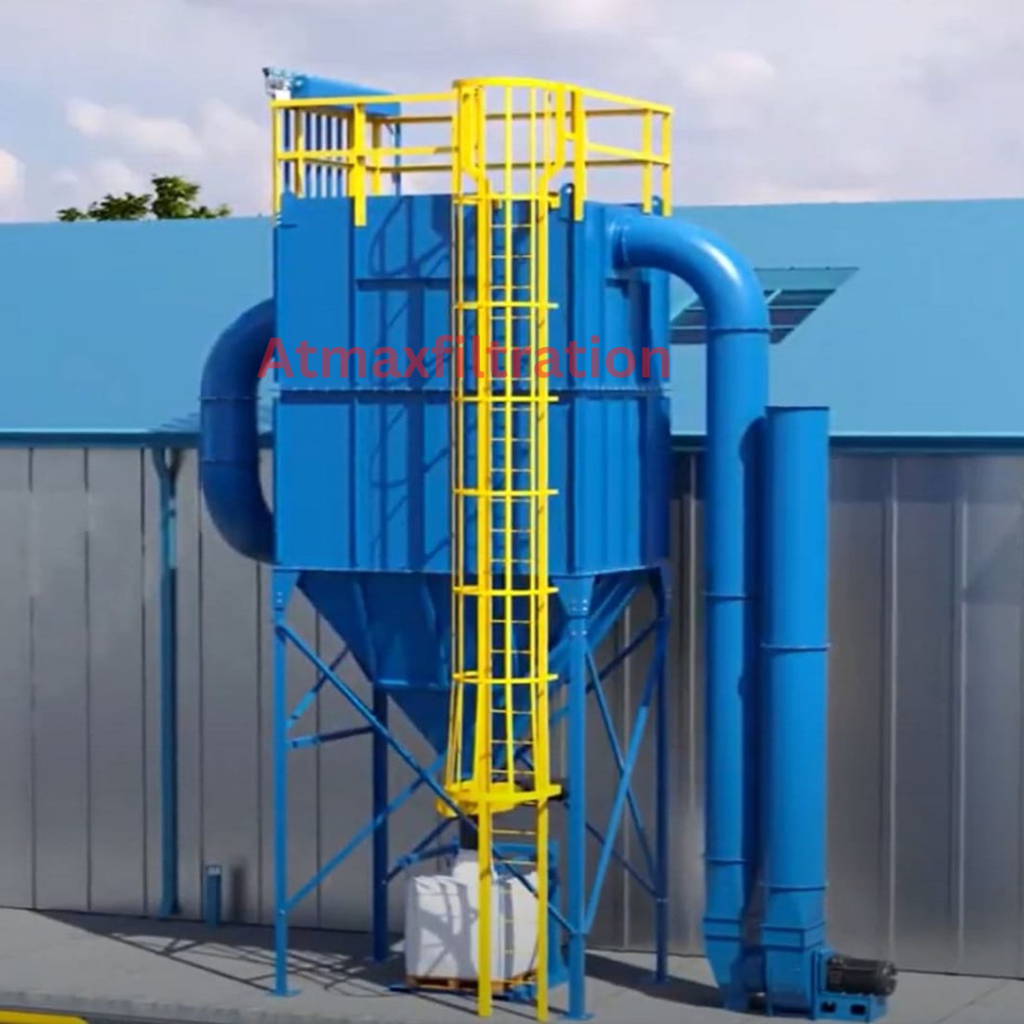A reverse pulse, also known as a pulse jet dust collector, employs a straightforward mechanism that yields significant outcomes in filter cleaning. Here’s a basic rundown: during standard operation of a dust collector, air moves from the filter’s exterior to its core, trapping dust on the filter’s outer surface.
To remove this accumulated dust, a burst of compressed air is directed through the filter’s center towards the outside, effectively clearing the dust from the filter’s surface. In downflow dust collectors like those from Atmax filtration, this dust is then captured by the downward air movement and collected in a bin.
Pulse Clean System Configuration
Compressed Air Setup: For the compressed air connection, utilize durable, industrial-grade rubber tubing or black piping. It’s crucial to install an inline air regulator to keep the desired PSI level consistent. Be aware of potential condensation issues if your air compressor is indoors and the air line extends to an outdoor collector, especially in colder temperatures, which could impact collector performance. Consider winterizing your facility and outdoor dust collector to enhance indoor air quality.
PSI Specifications: The pulse jet dust collector should be set to operate at 90 PSI. PSI, or pounds per square inch, is a pressure measurement. In the metric system, pressure is measured in kg/cm2 (to convert kg/cm2 to PSI, multiply by 14.22). Increasing your compressed air’s pressure doesn’t necessarily improve the cleaning pulse and may harm filters and diaphragms, leading to bypass issues. For optimal results, use dry compressed air.
Additional Considerations: A pulse filter cleaning system means filters last longer, but they will still require eventual replacement. Consider OEM replacement filters. A solenoid heater kit, connected to the pulse jet dust collector and compressed air line, is essential. Also, consider the electrical needs for solenoids and the importance of keeping diaphragms dry to prevent freezing and damage in cold climates.
Operating Principles
An inefficient industrial air filter cleaning machine can cause downtime, increased energy use, and poor dust removal. An effective system automatically pulses compressed air to clean filters, dislodging dust particles. Without this, dust will accumulate on the filter media. Explore timer boards to understand their role in this process.
Cleaning Methods
- Online Cleaning: Occurs while the fan runs, based on differential pressure gauge limits.
- Downtime Cleaning: Happens when the fan is off, scheduled via the control panel/timer board for optimal filter cleaning based on daily use.
Inside the Dust Collector by Atmax Filtration
Designing the Atmax filtration units, ease of maintenance was a priority. Cartridge filters are supported by two rails, avoiding internal yoke support frames and allowing unobstructed cleaning. Features like support rails, an automatic venturi-assisted pulse cleaning system, quick-release filter doors, and easy filter access underscore the maintenance-friendly design.
For more information write to us at sales@atmaxfiltration.com or call us at +1 (816)-745-9994

